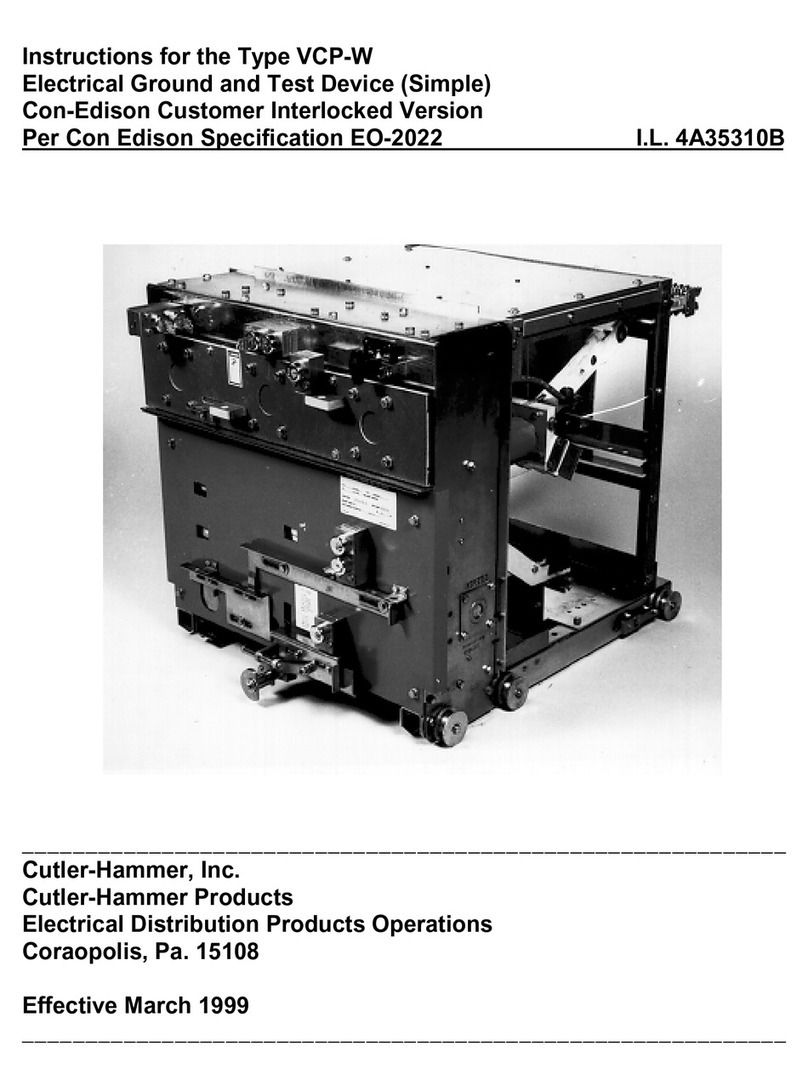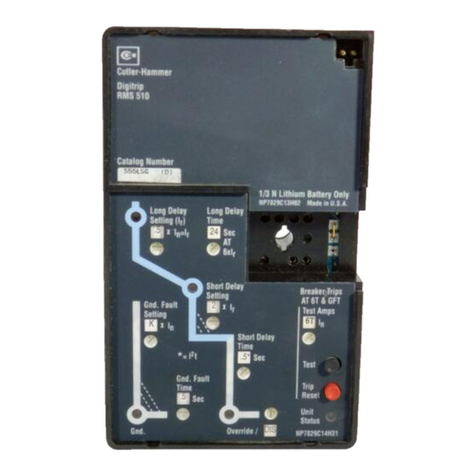
I.B. 35-557
2 of 45
DISCLAIMER OF WARRANTIES
AND LIMITATION OF LIABILITY
THERE ARE NO UNDERSTANDINGS, AGREEMENTS, REPRESENTATIONS OR
WARRANTIES, EXPRESSED OR IMPLIED, INCLUDING WARRANTIES OF
MERCHANTABILITY OR FITNESS FOR A PARTICULAR PURPOSE, OTHER THAN
THOSE SPECIFICALLY SET OUT BY AN EXISTING CONTRACT BETWEEN THE
PARTIES. ANY SUCH CONTRACT STATES THE ENTIRE OBLIGATION OF SELLER.
THE CONTENTS OF THIS DOCUMENT SHALL NOT BECOME PART OF OR MODIFY
ANY PRIOR OR EXISTING AGREEMENT, COMMITMENT OR RELATIONSHIP.
The information, recommendations, descriptions and safety notifications in this
document are based on Cutler-Hammer’s experience and judgement with respect to
the HWT-500 TEST SET. THIS INFORMATION SHOULD NOT BE CONSIDERED TO BE
ALL-INCLUSIVE OR COVERING ALL CONTINGENCIES. If further information is
required, Cutler-Hammer should be consulted.
NO WARRANTIES, EXPRESSED OR IMPLIED, INCLUDING WARRANTIES OF
FITNESS FOR A PARTICULAR PURPOSE OR MERCHANTABILITY, OR WARRANTIES
ARISING FROM COURSE OF DEALING OR USAGE OF TRADE, ARE MADE
REGARDING THE INFORMATION, RECOMMENDATIONS, DESCRIPTIONS AND
SAFETY NOTATIONS CONTAINED HEREIN. In no event will Cutler-Hammer be
responsible to the user in contract, in tort (including negligence), strict liability or
otherwise for any special, indirect, incidental or consequential damage or loss
whatsoever including but not limited to damage to or loss of use of equipment, plant
or power system, cost of capital, loss of profits or revenues, cost of replacement
power, additional expenses in the use of existing power facilities, or claims against
the user by its customers resulting from the use of the information,
recommendations, descriptions and safety notations contained herein.
Please read instruction book I.B. 35-557 carefully before attempting to use the HWT-500.
Any questions regarding the HWT-500 Test Set or its instruction booklet may be answered by calling the
Cutler-Hammer Network Protector toll-free number: 1-800-525-6821.
Failure to follow instructions contained within the instruction booklet and addendum could result in severe
personal injury, death, and/or product or property damage and will void any warranties, expressed or implied.
These instructions do not purport to cover all possible contingencies that may arise during
installation, operation, or maintenance, and all details and variations of this equipment. If further
information is desired by purchaser regarding his particular installation, operation or maintenance of
his equipment, the local Cutler-Hammer representative should be contacted.





























